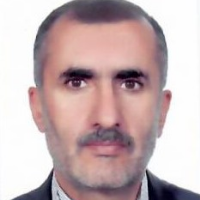Evaluation of AquaCrop model for simulation of Wheat plant (Triticum) yield under different scenarios of agricultural management in Qazvin
The agriculture sector, as the biggest consumer of water to produce more food, has faced the challenge of water shortage. One of the problems ahead in the agricultural industry is the sustainable use of available resources such as land, water, and labor to increase agricultural production and development, which requires proper planning and management policies. Plant models can be used to investigate the long-term effects of quantitative and qualitative changes in irrigation water on crops, soil salinity, evaporation and transpiration, deep infiltration, and surface runoff. One of the widely used plant models is the AquaCrop model, which was presented and developed by the World Food and Agriculture Organization. The Aquacrop model is one of the crop yield estimation models that can be used for a wide range of crops including fodder crops, vegetables, grains, fruits, oil crops, and tubers. In this model, the state of various stresses including water and soil salinity, simulation of lack of irrigation, and crop yield are considered. Various studies have been conducted regarding the calibration and validation of crop forecasting models in our country, and much research has been conducted on wheat at the global level. In this research, the AquaCrop model was used to predict the biomass and grain yield of wheat in Qazvin. This model can be a good substitute for field measurements and can be used in areas where there is a lack of ground information.
In the present research, the data of water wheat cultivation in a lysimeter in Ismailabad, Qazvin were used. The input information of the AquaCrop model includes information on climate, soil, management, and plant characteristics. To calibrate and verify the model, some farm information was needed to be compared with the output of the AquaCrop model. The biomass of the wheat plant was determined by taking random samples of the 0.5×0.5 m2 with two replications per sampling hectare. To measure grain yield in the fields, four samples were taken at the end of the growing season at the end stage. The validated AquaCrop model was used to estimate the effect of three planting dates and three low irrigation conditions on wheat grain yield. In this step, the average regional information around the farms was used so that the implementation of the model is not unique to the conditions of a particular farm.
In terms of the investigated meteorological factors, the model has moderate sensitivity to maximum and minimum temperature and low sensitivity to rainfall. The change in the maximum temperature in this region increases the error of the simulation on average. Regarding the soil parameters, the sensitivity of the model to the crop capacity moisture, wilting point, saturated moisture, and saturated hydraulic conductivity, especially in saturated conditions, is low to medium. The most sensitive of the AquaCrop model was the change in the reference harvest index. The model simulated biomass values with higher accuracy than yield. In the calibration stage, the values CRM, NRMSE, and d for biomass were -0.15, 0.17, and 92% respectively. These values were obtained in the validation stage for biomass -0.1, 0.24, and 92 % respectively, and for yield -0.03, 0.06, and 80 % respectively. By running the model in different climatic scenarios, it was determined that the maximum delay in the planting date is on November 15. A 25% reduction in irrigation water reduced grain yield in wet, normal, and dry years by 15%, 20%, and 28 %, respectively, and a 50 % reduction in irrigation water reduced its amount by 20, 25, and 45 %, respectively.
Evaluation of the AquaCrop model for common plants in a region plays an important role in comparing crop performance in different conditions. In this research, the ability of AquaCrop 6 model to estimate the yield and biomass of wheat in Ismailabad Qazvin was investigated. The results showed that the model is capable of simulating these factors with high accuracy. The accuracy of the model in biomass simulation was higher than the grain yield. By implementing the calibrated model in different climatic scenarios, planting dates, and irrigation deficits in two regions, it was determined that to achieve optimal performance, the wheat planting date should not exceed 15 November. It was the use of calibration coefficients by spending a long time in the AquaCrop model so that a calibrated model can be used in many areas with proper accuracy. More accuracy in the simulated results can be achieved by using more calibration factors, but it is clear that the use of more calibration factors requires spending more time and money. Finding a general recalibrated model that can be used in large areas is a good solution in crop management at the farm-to-regional scale. Comparing the statistical parameters obtained in this study with previous studies on wheat yield modeling by the AquaCrop model shows that the results of this study are within an acceptable range.
پرداخت حق اشتراک به معنای پذیرش "شرایط خدمات" پایگاه مگیران از سوی شماست.
اگر عضو مگیران هستید:
اگر مقاله ای از شما در مگیران نمایه شده، برای استفاده از اعتبار اهدایی سامانه نویسندگان با ایمیل منتشرشده ثبت نام کنید. ثبت نام
- حق عضویت دریافتی صرف حمایت از نشریات عضو و نگهداری، تکمیل و توسعه مگیران میشود.
- پرداخت حق اشتراک و دانلود مقالات اجازه بازنشر آن در سایر رسانههای چاپی و دیجیتال را به کاربر نمیدهد.



